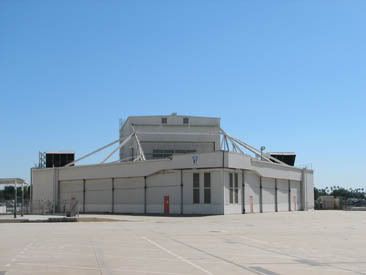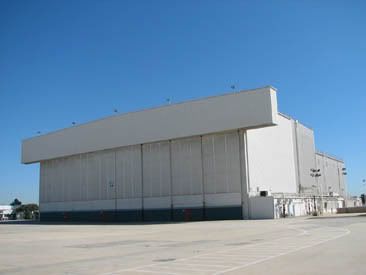
Seventeen football fields. That’s the size of the property that Long Beach Studios plans to turn into a state-of-the-art movie production facility complete with a water tank stage, a production building with retractable walls, accommodations (rather than trailers ) for cast and crew, a motion-capture studio, 100,000+ feet of office space and enough studio space to shoot up to 15 movies or television shows at one time.
The space itself is enormous—nearly a quarter mile from end to end with a four-story ceiling. Jay Samit and Jack O’Halloran—who are Long Beach Studios—can hardly contain themselves with excitement. O’Halloran is an imposing but warm 6’4” man with cinderblocks for hands, boasting an extensive career in acting and movie production who first envisioned the plan. Samit was the man he found to make it all happen.
“I wanted nothing to do with it at first,” Samit says of his first meeting with O’Halloran. “Then I saw this space and realized that he’s the smartest man in America.”
The pair has been working for about a year to acquire the space, an idea that excited Mayor Bob Foster so much that his office actually acted as facilitators between Long Beach Studios and Boeing to make the deal happen. Foster says the move could bring Long Beach “back to the future,” to relive its days as a major movie producer in the 1920s and ‘30s.
“I don’t know anything about making movies,” Mayor Foster says. “But these guys were talking about building New York streets in here—I think it’s really gonna work. These gentlemen want to put a state-of-the-art facility in here.”
He also points out that the increased activity could do wonders for the surrounding area. Industries from hotels to restaurants and many more could benefit greatly—not to mention employment, which will be needed by the thousands once production is moving at full speed.
“To lose the 717 is a big blow, no doubt about it,” Foster says of the Boeing 717, which was built on the property until Boeing ceased production about one year ago. “There were a lot of hard-working, talented people here. To replace it with another kind of manufacturing—the manufacturing of dreams —is very important. If this works, you’ll have all kinds of industries in the area.”
Which may be sooner than previously thought. Samit says he has already been in talks with production teams that are interested in using the converted studio as early as January 2009. The main reason? All they need is a big space. For movies that require massive shells—Samit references this past summer’s Indiana Jones, which was shot in a hangar in Downey—nothing fancy is needed. Similar types of movies can be shot on location within months. The more advanced sound stages will begin to be put in place sometime in early 2009.
“If you had unlimited funding, you couldn’t build a studio as nice as this,” Samit says.
The reason is largely due to the space’s previous use: building airplanes. Boeing built the steel-constructed factory in the 1930s and unknowingly created the world’s perfect movie studio—with floors that stand so much force they do not vibrate, several levels of catwalks that can support lights and power grids, and enough length to create a field of depth that modern movies are forced to simulate with digital blue or green screens.
“When I first walked in here, I said ‘I’m home,’” says O’Halloran. “Mayor Foster sent me here after looking at two other sites. He told me that it wasn’t for sale and I said “Yeah it is. Watch.”
Two years later, O’Halloran and Samit are close to completing the deal at over half a billion dollars.
“We have some really good partners that ant to keep the industry in California,” Samit says. “Last year, more than $1 billion was spent making movies in Vancouver that could have been kept local. This will make them want to come here.”

Building 87, which has retractable walls that would be ideal for constructing and transporting large sets and props.

Atop the main building, where remnants of the past Boeing 717 production are still prominently displayed.

Building 85, which will likely house the water tank studio.
By Ryan ZumMallen, Managing Editor
